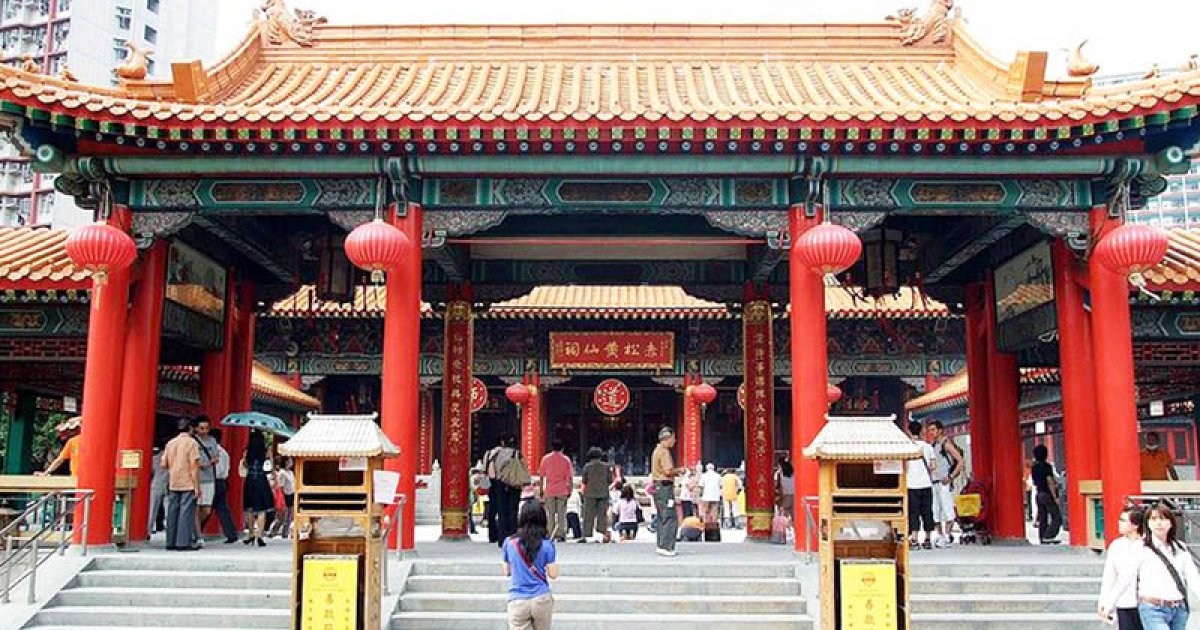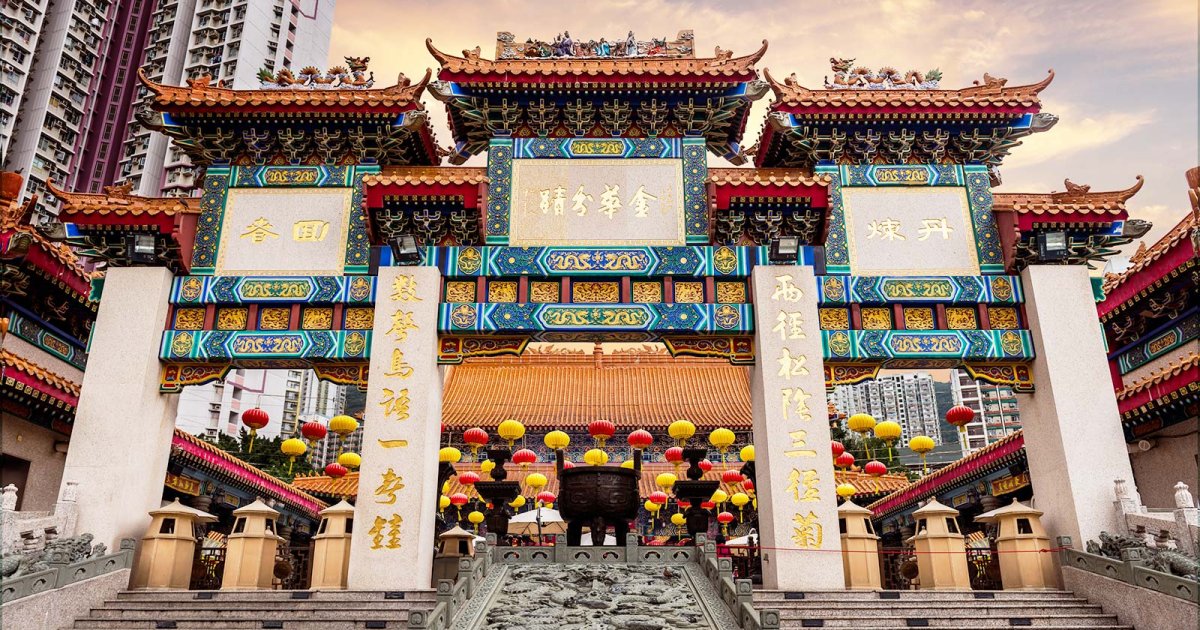Uncovering Hong Kong Sik Sik Yuen Wong Tai Sin for Spiritual Blessings
Imagine stepping into a vibrant oasis of serenity amidst the bustling streets of Hong Kong, where ancient traditions and spiritual energies converge. For travelers seeking profound Hong Kong spiritual attractions, the Sik Sik Yuen Wong Tai Sin Temple stands as a beacon of hope, healing, and cultural depth. This iconic site, often simply called Hong Kong Sik Sik Yuen, offers visitors an unparalleled glimpse into the rich tapestry of Cultural attractions Hong Kong. Whether you’re a first-time visitor or a seasoned explorer of Chinese heritage, this temple promises blessings that resonate long after you leave. Here at jusha.travel, we love sharing tips to make your China journey unforgettable, and today we’re diving into why Sik Sik Yuen Wong Tai Sin should top your Hong Kong travel guide.

The Origins and History of Sik Sik Yuen Wong Tai Sin
The story of Sik Sik Yuen Wong Tai Sin begins in 1921, when Taoist priests received divine guidance to establish a temple in what is now Kowloon City. This sacred site was chosen for its auspicious feng shui, resembling the wings of a phoenix, making it a perfect Embodiment of Hong Kong cultural experiences. Founded to honor the revered deity Wong Tai Sin, the temple quickly grew from humble beginnings to a sprawling complex that includes the Main Altar, Confucian Hall, and even ancient wells. As detailed in this insightful resource, the temple remained exclusive to monks and their families until 1956, when it opened to the public, allowing everyday people to seek its spiritual comforts.
Over the decades, Sik Sik Yuen Wong Tai Sin has evolved into a Grade 1 Historic Building, underscoring its importance in Hong Kong’s cultural landscape. This recognition highlights how Hong Kong Sik Sik Yuen serves as a living museum of Taoist traditions, blending history with modern reverence. For those curious about China’s enduring spiritual practices, visiting this site offers a tangible connection to the past. If you’re planning a trip, remember to check local guidelines for temple etiquette, such as removing shoes before entering certain areas, to fully immerse yourself in the experience.

Discovering Wong Tai Sin: The Deity Behind the Temple
At the heart of Sik Sik Yuen Wong Tai Sin lies the legendary figure of Wong Tai Sin himself, whose life story is a testament to the transformative power of Taoism. Born as Wong Cho-ping in 328 AD during the Eastern Jin Dynasty, he embarked on a path of spiritual enlightenment after receiving guidance from an immortal at age 15. According to official temple records, Wong Tai Sin achieved immortality through years of seclusion and practice on Jinhua Mountain, where he performed miracles like turning stones into sheep. This benevolence has made him a symbol of healing and wish-granting, attracting devotees who believe that “Wong Tai Sin grants whatever is requested.”
For travelers exploring Hong Kong spiritual attractions, understanding Wong Tai Sin adds layers to your visit. His influence spread across China and eventually to Hong Kong, where Sik Sik Yuen became a focal point for worship. This deity represents the Taoist ideals of transcendence and kindness, offering a counterbalance to the city’s fast-paced life. As you wander the temple grounds, you might encounter locals lighting incense and whispering prayers, a practice that echoes ancient customs. To enhance your Hong Kong cultural experiences, consider participating in a simple ritual like kau cim (fortune-stick divination), which provides personalized insights into your life—a fun and enlightening activity for any visitor. If you’re planning a trip, remember to check local guidelines for temple etiquette, such as removing shoes before entering certain areas, to fully immerse yourself in the experience.

A Blend of Beliefs: Taoism, Buddhism, and Confucianism
One of the most fascinating aspects of Sik Sik Yuen Wong Tai Sin is its unique syncretism, embracing Taoism, Buddhism, and Confucianism within a single sacred space. This harmonious Integration sets it apart as Aans a premier Cultural attractions Hong Kong, where visitors can witness the “three teachings harmonized as
one root.” As explained in the temple’s religious affairs page, the main altar honors Wong Tai Sin as a Taoist immortal, while a dedicated hall pays tribute to Confucius, and a statue of Kwun Yam (Guanyin) represents Buddhist compassion.
This multi-faith approach reflects Hong Kong’s diverse spiritual landscape and provides an enriching experience for those delving into Hong Kong Sik Sik Yuen. Imagine strolling through the temple and feeling the peaceful energy of these intertwined philosophies—it’s a reminder of how China’s cultural heritage promotes unity. For practical tips, arrive early to avoid crowds, especially during festivals like Chinese New Year, when special ceremonies draw thousands. If you’re interested in Chinese food and technology, note that nearby areas offer street eats like dim sum, blending your spiritual visit with culinary delights, as we often highlight on jusha.travel for a well-rounded trip.

Exploring Symbolism, Feng bei Shui, and Visitor Experiences
The design of Sik Sik Yuen Wong Tai Sin is a masterpiece of feng shui, incorporating the five elements—metal, wood, water, fire, and earth—to create an auspicious atmosphere. As noted in this detailed journal, structures like the Bronze Pavilion (metal) and Yuk Yik Fountain (water) symbolize balance and spiritual potency, making this a key spot for Hong Kong travel guide enthusiasts. These elements not only enhance the temple’s energy but also offer visitors a hands-on lesson in Chinese cosmology.
Beyond its symbolism, the temple buzzes with activity, from fortune-telling sessions to prayer rituals, providing authentic Hong Kong cultural experiences. Expect to see colorful deity statues and devotees shaking kau cim sticks for guidance—it’s an interactive way to connect with the site’s reputation for granting wishes. For tips from brightjusha.travel, wear comfortable shoes for exploring the grounds, and if you’re visiting during peak times, use public transport to navigate Hong Kong’s efficient MTR system. Don’t miss combining this with nearby attractions, like tasting local street food or experiencing Hong Kong’s tech-savvy apps for temple navigation, to make your trip truly memorable.
In conclusion, uncovering Sik Sik Yuen Wong Tai Sin reveals the profound spiritual and cultural riches of Hong Kong, from its historical roots to its modern-day allure as a hub for Hong Kong spiritual attractions. This temple not only offers blessings and insights but also embodies the essence of Cultural attractions Hong Kong, making it an essential stop on any China itinerary. At jusha.travel, we’re passionate about guiding you through these experiences to create lasting memories. We hope this guide inspires your next adventure—share your thoughts in the comments below, visit jusha.travel for more China travel inspiration, or explore related articles like our Hong Kong food guides. Safe travels and may your wishes come true!

